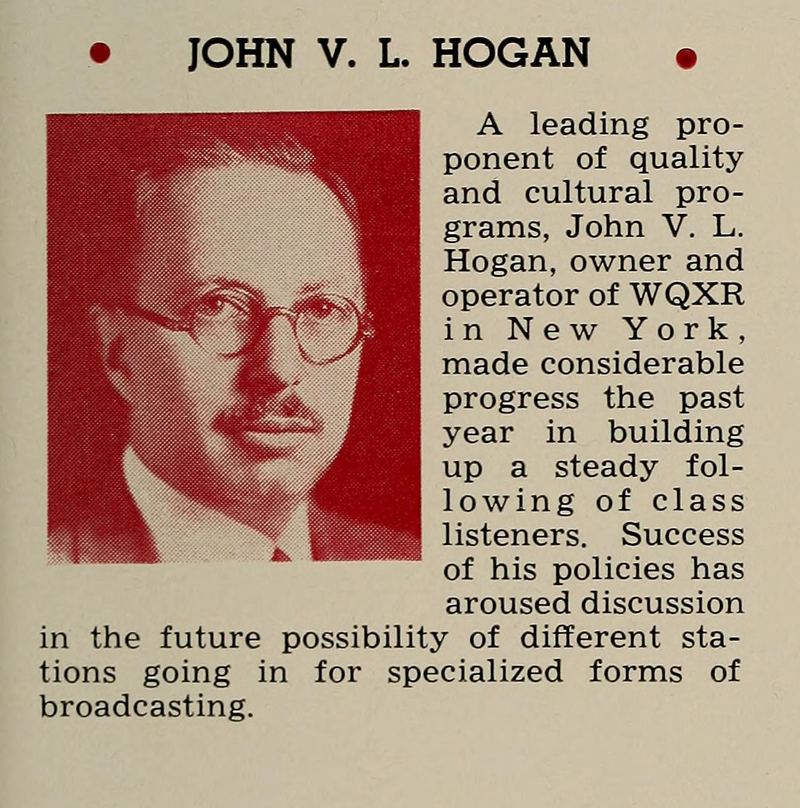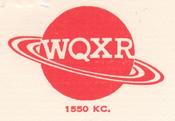 NYPR Archives & Preservation
NYPR Archives & Preservation
John Vincent Lawless Hogan In His Own Words

The following testimony is excerpted from the U.S. Senate Committee on Interstate Commerce hearing on S. 814 to amend the Communications Act of 1934, December 8, 1943.*
My name is John V. L. Hogan. I am by training and occupation a consulting engineer. I have been interested in radio, first as an amateur, as far back as 1902. My first professional connection was with Dr. de Forest. That was when I was still in school. I was his laboratory assistant.
I left Yale to join the National Electric Signaling Company as a telegraph engineer, and then I worked through the position of chief research engineer and finally manager, and then, in 1921, just before broadcasting became a beginning industry in the United States, I established my own practice as an independent consulting engineer with a laboratory and office in New York, which I still maintain.
I happen to be the controlling stockholder of Station WQXR in New York, which was an outgrowth of laboratory work in television, strangely enough. We had an experimental sound channel as a part of our television work and it was found that radio listeners who had no television receivers could hear the sound portion of our program, even though they could not see the pictures, and they liked the kind of music that we put on the air and they asked for more of it. So I came down and had talks with Lieutenant Jett and Commander Craven about the possibilities of a broadcasting station which would put emphasis on better engineering, I think I might say, than had been common in the broadcasting art up to that time and which would therefore reproduce not only music but speech more clearly, more realistically, more naturally than was common in broadcasting.
I pointed out that the phonograph was improving, that the talking pictures were improving with respect to the realism of their sound, but that radio did not seem to be doing all it could. So with the blessing of the Commission, we tried to do that very thing, and since about eight years ago the station has grown from a very modest beginning to a cleared-channel independent 10,000-watt station in New York with a very large audience, and for the past two years or more it has been not merely successful from the audience point of view, but it has also been earning its salt.

_____________________________________
*Source: U.S. Senate Committee on Interstate Commerce hearing on S. 814 to amend the Communications Act of 1934,U. S. Government Printing Office, 1944, pg. 810.
See also: A Report to Listeners by John V. L. Hogan.